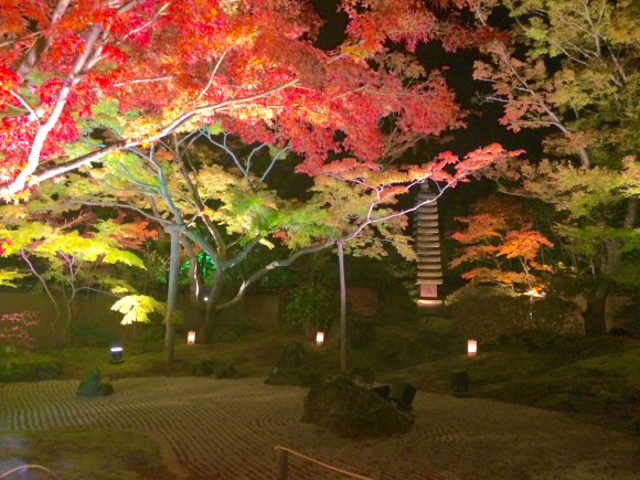
There’s no better time to come to Japan than fall, and no better way to spend your trip than by wandering through these crimson forests and gardens.
A lot of people would say that spring is the best time to travel to Japan, since it lets you avoid the country’s biting winter cold and sweltering summer heat. But really, you can get that same comfortable, sightseeing-conducive weather in autumn too.
Granted, coming in autumn means you’ll miss the cherry blossoms, but you’ll be right on time for Japan’s dazzling fall colors. Even better, Japan’s crimson foliage offers a longer viewing window than the cherry blossoms, meaning you don’t have to plan your trip so precisely in order to enjoy the scenery.
Of course, once you’ve decided to travel in Japan during the fall, the next step is to pick your specific destination, and to help with that Japanese travel site Jalan polled 533 of its users and put together this list of the top 10 spots to see the fall colors in Japan.
10. Korankei Gorge (best viewing period: mid-November to early December)
A doable day trip from Nagoya, Korankei is famous for the maple leaves lining the hiking paths through the foothills of nearby Mt. Iimori.
9. Meiji no Mori Mino Quasi-National Park (mid-November to early December)
Don’t let the anticlimactic-sounding “quasi” qualifier fool you. This Osaka nature park has hiking trails that climb high mountains, multiple Buddhist temples, and the breathtaking 33-meter (108-foot) Mino Waterfall, seen above.
8. Metasequoia Road (early November to early December)
Japan has a number of paths lined with the trees also known as dawn redwoods, but this particular one is located in Shiga Prefecture and stretches for 2.4 kilometers (1.5 miles) along the access road to the Makino Highland outdoor leisure area in the town of Takashima.
6 (tie). Hitachi Seaside Park (mid-October)
While maples are the first thing to come to mind when imagining beautiful fall foliage, this sprawling park in Ibaraki Prefecture is famous for its hills covered in kochia shrubs, which we visited for ourselves not long ago. Though they’re green for most of the year, during the fall they turn an otherworldly crimson, making a visit to the park an extremely rewarding day trip from Tokyo (and the park is gorgeous in a whole other way in the spring).
6 (tie). Naruko Gorge (late October to early November)
Miyagi Prefecture’s Sendai would be the urban staging base for a foray into Naruko. Once there, travelers are split as to whether the best option is to see things from ground level by strolling along the Ofukazawa Waking Trail or from the trains that run across dizzyingly high bridges over the valley, but the view is beautiful enough that you really can’t go wrong either way.
5. Kokoen Garden (mid to late November)
Hyogo Prefecture’s immaculately preserved Himeji Castle is often called Japan’s finest standing samurai stronghold, but make sure to also leave some room on your itinerary for Kokoen, a garden located just a few minutes’ walk from the castle’s gate. Kokoen makes use of the Japanese garden design concept of “borrowed scenery,” and the grounds are laid out in a way so that Himeji Castle can often be seen lying in the background of the red leaves.
4. Sumata Gorge (early November to late November)
The highlight of a hike through this wooded river valley in Shizuoka Prefecture is the part where you cross the Yume no Tsuribashi, or “Suspension Bridge of Dreams.” As always when crossing a swaying suspension bridge, it’s best for your nerves not to look down, so it’s nice to have all the pretty autumn trees to keep your eyes focused straight ahead.
3. Maple Tunnel (early November to mid-November)
Like with the Metasequoia Road mentioned above, we’ll need to get a little more specific as to which maple tunnel took the number-three spot. It’s the one in the Fujikawaguchiko district of Minamitsuru in Yamanashi Prefecture. If the only part of that geography that rings a bell is “Fuji,” that’s because the arching maple trees are on the shores of Lake Kawaguchi, with Mt. Fuji standing majestically past the opposite shoreline.
2. Tsutanuma (mid-October to late October)
Some call Tsutanuma a lake. Others dub the Aomori Prefecture body of water with a one-kilometer (0.6-mile) circumference a mere pond. Semantics aside, it’s large (and calm) enough that the water forms a perfect reflecting mirror, making it seem like the entire world has been dyed vermillion.
1. Byodoin Temple (early November to late November)
Taking the top spot in the poll was Byodoin. Ironically, this beloved Kyoto travel destination is actually something that Japanese people see almost every time they buy a drink out of a vending machine, since it’s pictured on one side of the 10-yen coin.
But no matter how many times you’ve seen Byodoin in currency form, you haven’t really seen it until you visit the actual site in the town of Uji. While Byodoin is stunning in any season, it’s especially so in fall, when the leaves change color just enough to match the hue of the building’s vibrantly painted timbers.
And if you somehow get tired of seeing all those reds, oranges, and yellows, you’ll still be in luck, since Uji is where Japan’s best matcha is grown, meaning the town is also full of cafes with menus full of green tea desserts.
Source: Jalan
Top image ©SoraNews24
Insert images: Jalan
[ Read in Japanese ]
Follow Casey on Twitter, where it’s taking all of his willpower not to pack his bags and hop on a train right now.
[ Read in Japanese ]

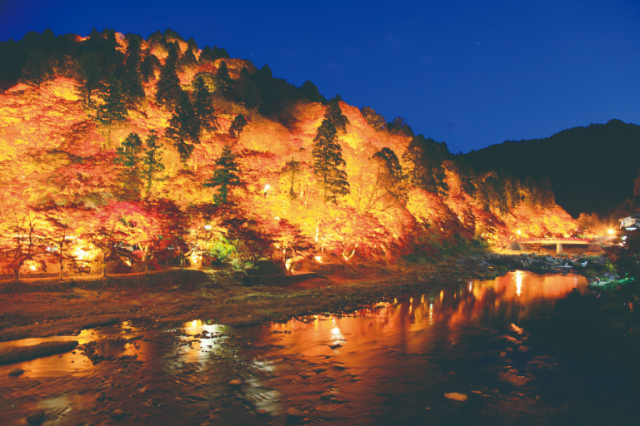

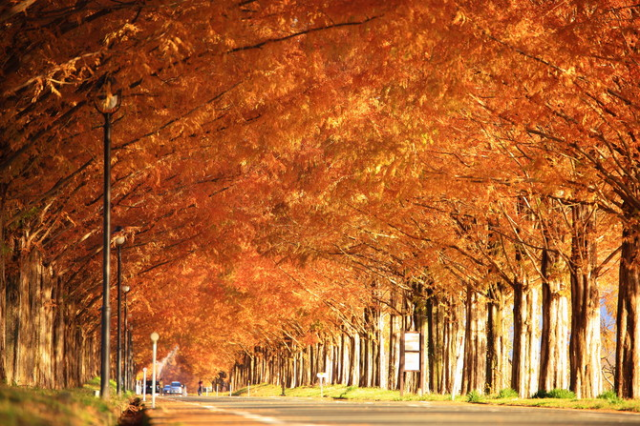
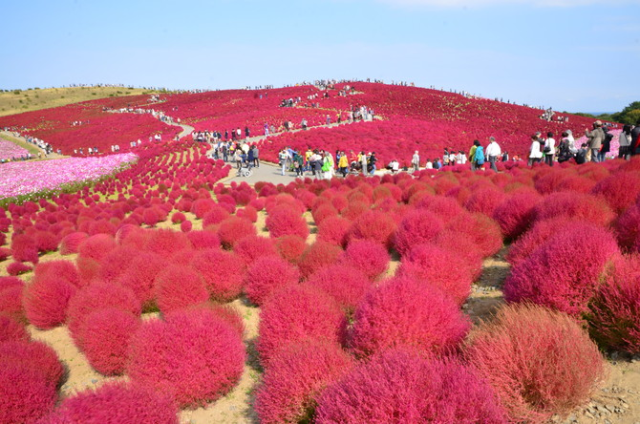
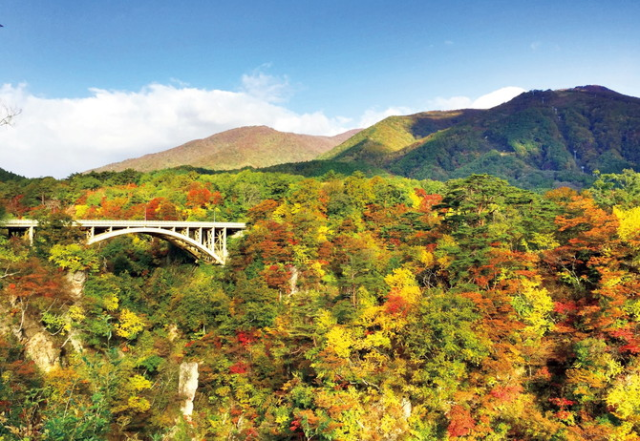

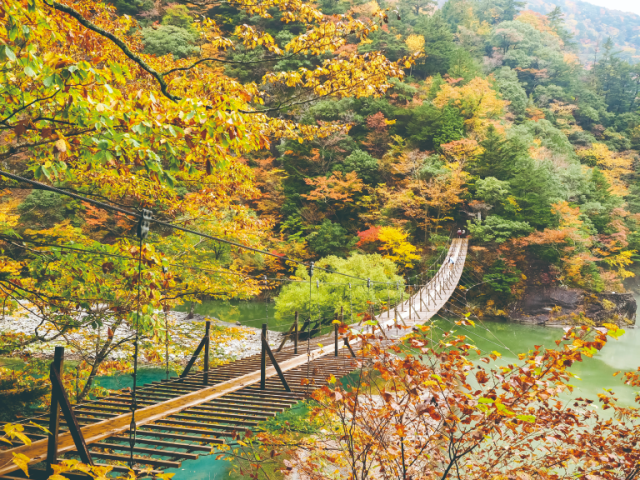
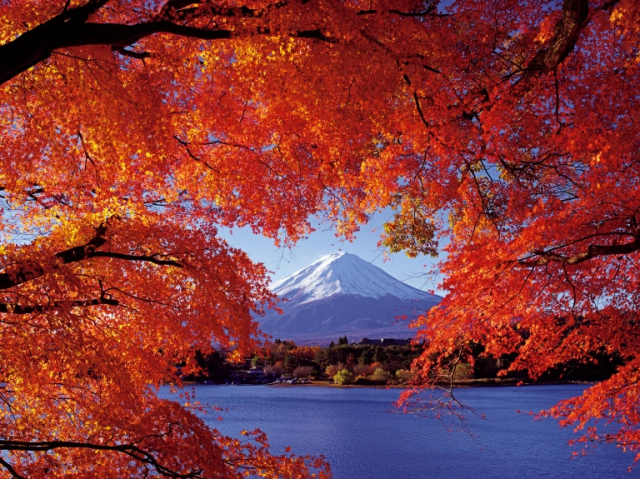
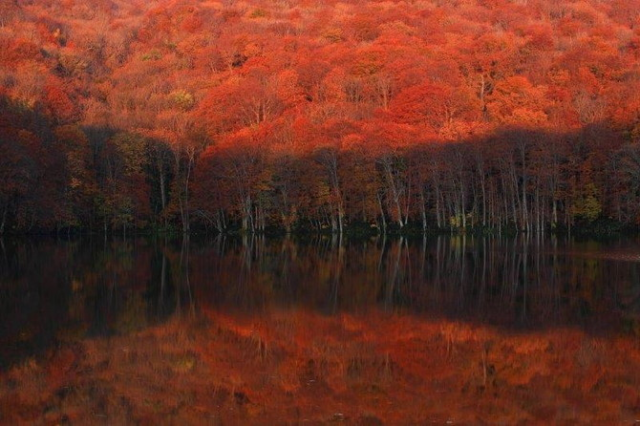
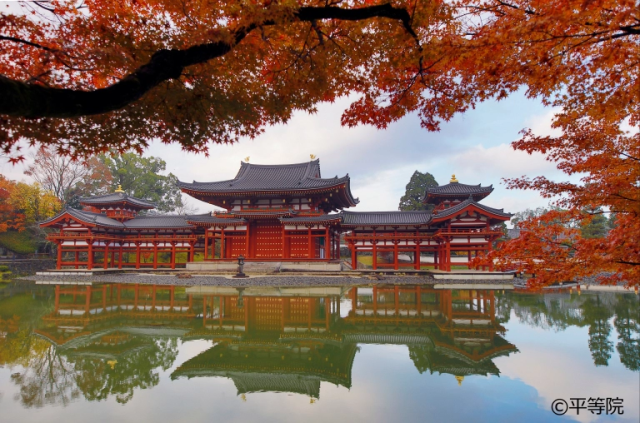
 The most popular places in Japan for viewing sakura in 2024, according to local travel agency
The most popular places in Japan for viewing sakura in 2024, according to local travel agency Think you’ve had every type of tempura? Not until you’ve eaten deep-fried maple leaves
Think you’ve had every type of tempura? Not until you’ve eaten deep-fried maple leaves Don’t let the rain get you down! Here are Japan’s top 10 most beautiful rainy day travel spots
Don’t let the rain get you down! Here are Japan’s top 10 most beautiful rainy day travel spots When is the best time to see Japan’s amazing fall color leaves?
When is the best time to see Japan’s amazing fall color leaves? Tokyo’s best downtown garden gets even more beautiful with after-dark fall colors event
Tokyo’s best downtown garden gets even more beautiful with after-dark fall colors event McDonald’s new Happy Meals offer up cute and practical Sanrio lifestyle goods
McDonald’s new Happy Meals offer up cute and practical Sanrio lifestyle goods All-you-can-drink Starbucks and amazing views part of Tokyo’s new 170 meter-high sky lounge
All-you-can-drink Starbucks and amazing views part of Tokyo’s new 170 meter-high sky lounge Studio Ghibli glasses cases let anime characters keep an eye on your spectacles
Studio Ghibli glasses cases let anime characters keep an eye on your spectacles More foreign tourists than ever before in history visited Japan last month
More foreign tourists than ever before in history visited Japan last month Kyoto’s 100 Demons yokai monster parade returns!
Kyoto’s 100 Demons yokai monster parade returns! Mister Donut ready to make hojicha dreams come true in latest collab with Kyoto tea merchant
Mister Donut ready to make hojicha dreams come true in latest collab with Kyoto tea merchant Super Nintendo World expansion gets delayed for several months at Universal Studios Japan
Super Nintendo World expansion gets delayed for several months at Universal Studios Japan Kyushu-exclusive Black Mont Blanc goes nationwide in a “Special” way
Kyushu-exclusive Black Mont Blanc goes nationwide in a “Special” way Masahiko Ozumi Paris in Osaka makes the comfiest desserts around
Masahiko Ozumi Paris in Osaka makes the comfiest desserts around Beautiful Sailor Moon manhole cover coasters being given out for free by Tokyo tourist center
Beautiful Sailor Moon manhole cover coasters being given out for free by Tokyo tourist center Disney princesses get official manga makeovers for Manga Princess Cafe opening in Tokyo
Disney princesses get official manga makeovers for Manga Princess Cafe opening in Tokyo Starbucks reopens at Shibuya Scramble Crossing with new look and design concept
Starbucks reopens at Shibuya Scramble Crossing with new look and design concept Beautiful new Final Fantasy T-shirt collection on the way from Uniqlo【Photos】
Beautiful new Final Fantasy T-shirt collection on the way from Uniqlo【Photos】 Is the new Shinkansen Train Desk ticket worth it?
Is the new Shinkansen Train Desk ticket worth it? Foreign English teachers in Japan pick their favorite Japanese-language phrases【Survey】
Foreign English teachers in Japan pick their favorite Japanese-language phrases【Survey】 Japanese convenience store packs a whole bento into an onigiri rice ball
Japanese convenience store packs a whole bento into an onigiri rice ball We try out “Chan Ramen”, an underground type of ramen popular in the ramen community
We try out “Chan Ramen”, an underground type of ramen popular in the ramen community Studio Ghibli releases Kiki’s Delivery Service chocolate cake pouches in Japan
Studio Ghibli releases Kiki’s Delivery Service chocolate cake pouches in Japan Japan’s bone-breaking and record-breaking roller coaster is permanently shutting down
Japan’s bone-breaking and record-breaking roller coaster is permanently shutting down New definition of “Japanese whiskey” goes into effect to prevent fakes from fooling overseas buyers
New definition of “Japanese whiskey” goes into effect to prevent fakes from fooling overseas buyers Our Japanese reporter visits Costco in the U.S., finds super American and very Japanese things
Our Japanese reporter visits Costco in the U.S., finds super American and very Japanese things Studio Ghibli unveils Mother’s Day gift set that captures the love in My Neighbour Totoro
Studio Ghibli unveils Mother’s Day gift set that captures the love in My Neighbour Totoro Foreign passenger shoves conductor on one of the last full runs for Japan’s Thunderbird train
Foreign passenger shoves conductor on one of the last full runs for Japan’s Thunderbird train Domino’s Japan now sells…pizza ears?
Domino’s Japan now sells…pizza ears? New Japanese KitKat flavour stars Sanrio characters, including Hello Kitty
New Japanese KitKat flavour stars Sanrio characters, including Hello Kitty Kyoto creates new for-tourist buses to address overtourism with higher prices, faster rides
Kyoto creates new for-tourist buses to address overtourism with higher prices, faster rides Sales of Japan’s most convenient train ticket/shopping payment cards suspended indefinitely
Sales of Japan’s most convenient train ticket/shopping payment cards suspended indefinitely Sold-out Studio Ghibli desktop humidifiers are back so Totoro can help you through the dry season
Sold-out Studio Ghibli desktop humidifiers are back so Totoro can help you through the dry season Japanese government to make first change to romanization spelling rules since the 1950s
Japanese government to make first change to romanization spelling rules since the 1950s Ghibli founders Toshio Suzuki and Hayao Miyazaki contribute to Japanese whisky Totoro label design
Ghibli founders Toshio Suzuki and Hayao Miyazaki contribute to Japanese whisky Totoro label design Doraemon found buried at sea as scene from 1993 anime becomes real life【Photos】
Doraemon found buried at sea as scene from 1993 anime becomes real life【Photos】 Tokyo’s most famous Starbucks is closed
Tokyo’s most famous Starbucks is closed One Piece characters’ nationalities revealed, but fans have mixed opinions
One Piece characters’ nationalities revealed, but fans have mixed opinions We asked a Uniqlo employee what four things we should buy and their suggestions didn’t disappoint
We asked a Uniqlo employee what four things we should buy and their suggestions didn’t disappoint Princesses, fruits, and blacksmiths: Study reveals the 30 most unusual family names in Japan
Princesses, fruits, and blacksmiths: Study reveals the 30 most unusual family names in Japan Right now, this amazing Japanese park is bathed in beautiful blue from 4.5 million flowers【Video】
Right now, this amazing Japanese park is bathed in beautiful blue from 4.5 million flowers【Video】 Sakura in Japan 2019: The best spots for hanami cherry blossom viewing
Sakura in Japan 2019: The best spots for hanami cherry blossom viewing When the pandemic is over…Beautiful photos of places Japan travelers want to visit after corona
When the pandemic is over…Beautiful photos of places Japan travelers want to visit after corona Enjoy the brilliantly colored autumn leaves at Shinjuku Gyoen with Mr. Sato
Enjoy the brilliantly colored autumn leaves at Shinjuku Gyoen with Mr. Sato Kyoto’s Rurikoin Temple to offer stunning views of autumn leaves for a limited time next month
Kyoto’s Rurikoin Temple to offer stunning views of autumn leaves for a limited time next month Amazing pics from Kyoto/Nara “bullet tour” show no matter how tight your schedule, you should go
Amazing pics from Kyoto/Nara “bullet tour” show no matter how tight your schedule, you should go Mt. Fuji is officially closed for the year
Mt. Fuji is officially closed for the year Japan’s other beautiful fuji, wisteria, are about to turn Ashikaga Flower Park into a wonderland
Japan’s other beautiful fuji, wisteria, are about to turn Ashikaga Flower Park into a wonderland Japan’s 30 best travel destinations, as chosen by overseas visitors
Japan’s 30 best travel destinations, as chosen by overseas visitors The top 10 hot springs Japanese travelers want to visit this fall
The top 10 hot springs Japanese travelers want to visit this fall Chance to see Japan bucket-list must-see scenery “Road to Laputa” gone for good?
Chance to see Japan bucket-list must-see scenery “Road to Laputa” gone for good? Himeji Castle gets first official Lego set, Zen block garden kit on the way too【Photos】
Himeji Castle gets first official Lego set, Zen block garden kit on the way too【Photos】 The leaves aren’t the only things changing in this beautiful series of photos from Nagano
The leaves aren’t the only things changing in this beautiful series of photos from Nagano Beautiful forest in southern Japan will spirit you away to another world
Beautiful forest in southern Japan will spirit you away to another world Heavy snowfall comes early to Japan, creates beautiful images of snow-covered autumn leaves【Pics】
Heavy snowfall comes early to Japan, creates beautiful images of snow-covered autumn leaves【Pics】
Leave a Reply